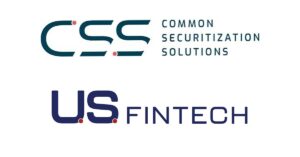For the first time in nearly two decades, Fannie Mae and Freddie Mac are making major changes to the application form that borrowers use to obtain a mortgage. These changes, in partnership with the mortgage industry, promise to provide greater efficiency, transparency and certainty for clients applying for mortgages and support the industry’s move to digitize the loan origination process.
All lenders will be required by Fannie and Freddie to use the new Uniform Residential Loan Application (URLA) and Uniform Loan Application Dataset (ULAD) for any loan to be eligible for sale on the secondary market. The forms also will satisfy the Equal Credit Opportunity Act, which prohibits discrimination against borrowers.
The government-sponsored enterprises (GSEs) will not require usage of the new loan applications until Feb. 1, 2020. After that, all new loans must use the new application. Originators and lenders will want to explore not only how the form and dataset work, but also how they can gain competitive advantage in the marketplace with the abundance of new collected data.
Business insights
The redesigned application format is more user-friendly and flexible for more accurate data collection. The new forms have a cleaner, more streamlined look —with more white space — that makes it easier for both lenders and borrowers to navigate the application.
Dynamic forms ensure borrower information always stays in context and decreases reliance on out-of-sequence continuation pages. Clearly defined separation of borrower and lender information also streamlines and helps avoid confusion in the form-completion process.
There is a strategic advantage for originators and lenders to use the new application forms. As more mortgage companies go digital, they can use client data to make marketing, sales, support and operational decisions. The new application form collects data that, with the right technology, can be harnessed to achieve strategic business insights as well as quickly and efficiently process, underwrite and deliver the loan to the secondary market or servicer.
Although it carries great advantages for both mortgage applicants and lenders, the new URLA also significantly alters how originators and lenders handle applications. It impacts both processes and systems and will compel companies to adjust some of their most fundamental activities. In order to avoid future disruptions in their business, originators and lenders should devote resources to the transition now. Importantly, they also should make sure they know how their technology providers are preparing to support this major initiative.
Successful transition
To successfully manage the transition, originators and lenders should craft implementation plans with clear goals and objectives, then execute those plans with specific milestones. Plans should be designed to minimize disruption, support the concurrent use of old and new URLA forms, and coordinate changes across multiple vendor solutions.
The overriding goal should be to prepare to manage a seamless transition to the new URLA with minimal business disruption. Here are a few of the factors mortgage companies should carefully consider. February 2020 is closer than you think. Giving originators and lenders additional time to start preparations helps position them for a more seamless transition. This will enable originators and lenders to use the time between now and January 2020 to train employees; update platforms, customizations and plug-ins; and prepare for a full-scale launch in advance of when the application form is required to be used.
Technology will be impacted at every stage of the origination process, from pre-qualifications to underwriting and investor relations. Loan origination systems and point-of-sale systems will need to be modified. The new URLA is a much larger digital document that not only requires more storage space but also may present a challenge for official cash rate-based solutions.
Originators and lenders must ensure their technology provider offers end-to-end support for the new URLA — including borrower engagement, origination, underwriting, e-closing, and investor delivery, as well as analytics and compliance. Don’t forget to schedule time to train employees and familiarize them with the new form and workflow.
Data requirements
Mortgage companies should understand the data requirements involved with the new form and dataset. In addition to various industry stakeholders, the GSEs also worked with the Federal Housing Administration (FHA), the U.S. Department of Veterans Affairs (VA) and U.S. Department of Agriculture (USDA) Rural Development to include the relevant data.
This includes military-service information from all applicants (not just those applying for a VA loan), FHA secondary-residence information and information required for loans on tribal lands. Originators and lenders should familiarize themselves with the new data required in the application across each of their loan programs.
Also, keep in mind that the Equal Credit Opportunity Act establishes that using the application form as published by the GSEs grants safe harbor under federal law. Mortgage companies thus have a vested interest in modeling their application procedures (whether through the web, by phone or in person) on the new form to reduce the risk of potential violations.
Lenders also should keep their investors’ needs in mind and be aware of where each investor stands in the transition process. Now is the time to start having these conversations with investors.
Best practices
The new URLA is much more than a revised form. It aims to improve the accuracy and clarity of the information being provided by the client, making it an easier and more efficient process to underwrite loans. These changes are long overdue. They promise to bring the mortgage industry into the 21st century and into alignment with current government regulations and industry best practices.
While the transition is likely to inconvenience originators and lenders initially, the payoff will be well worth it. Those who act now to create their implementation plans will gain a head start on a smooth transition in advance of the February 2020 deadline.
Those who take a best-practice approach to implementation of the new URLA — including provisions for planning, technology, data, compliance, language support and investor systems — will make the transition a non-event for their business, while opening the way to greater efficiency, transparency and certainty for both lenders and borrowers.
Author
-
John Haring serves as director of product management for Ellie Mae, the leading cloud-based platform provider for the mortgage finance industry. Throughout his career, Haring has helped banks, lenders and brokers implement significant regulatory changes that impact the mortgage industry.
View all posts






